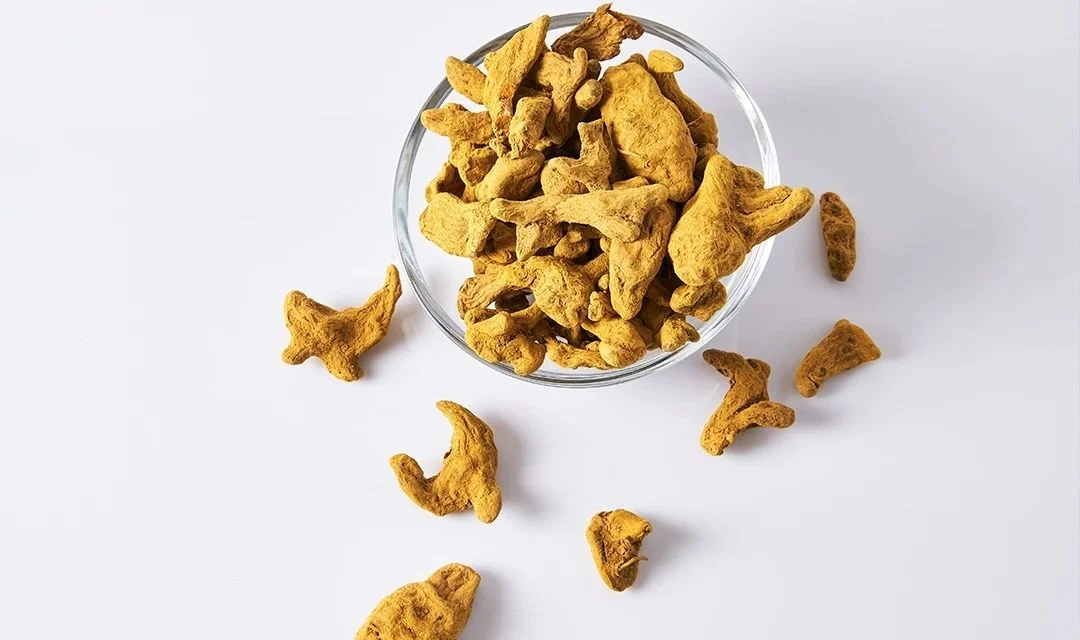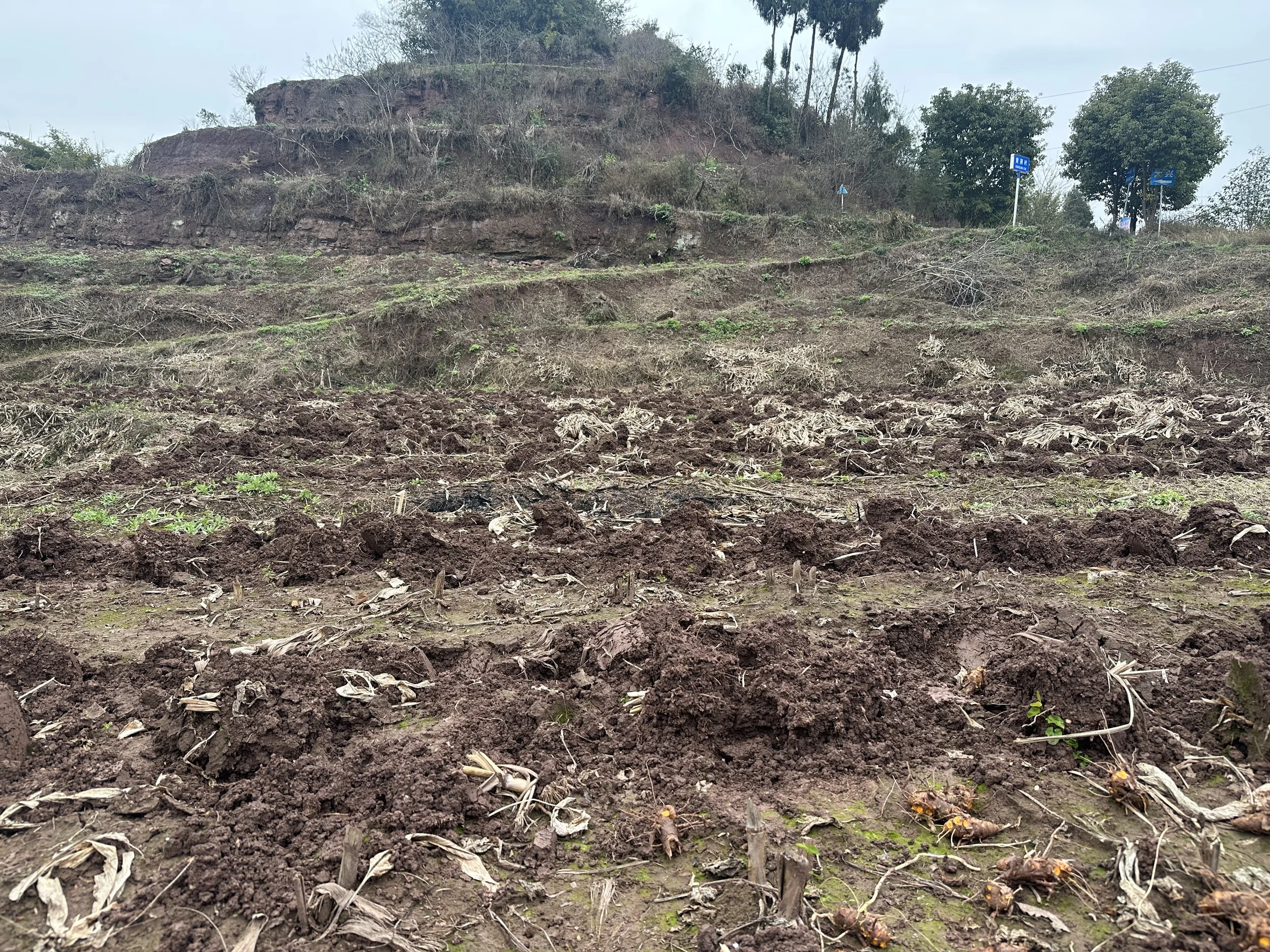Rushi Report: 2024 Turmeric Harvest Assessment and Food Safety Evaluation
In June 2024, the Rushi Spice Team conducted a comprehensive evaluation of turmeric cultivation and processing in Leshan, Sichuan, focusing on quality assessment, food safety, and risk analysis. This evaluation follows the National Food Safety Risk Assessment Center’s guidelines, identifying key risks throughout the turmeric production and supply chain.
Turmeric Harvest Assessment and Food Safety Evaluation
Overview of Turmeric Production in Sichuan
Turmeric, scientifically known as Curcuma longa, is a member of the Zingiberaceae family. In Sichuan, turmeric is mainly cultivated in Leshan and surrounding regions, with significant production in Yunnan, Myanmar, and Vietnam. The plants grow to a height of 1-1.7 meters, with robust rhizomes and elongated leaves. The flowers are pale yellow, and only a few plants flower.
Turmeric Characteristics:
The rhizomes are irregular, with a rough, yellow surface that shows wrinkled textures, circular branching marks, and root scars. When cut, the cross-section is yellow to golden yellow, with a waxy sheen.
The flavor profile of turmeric is bitter and pungent, with a strong aromatic presence. Its fragrance is derived from a mix of terpenes, alcohols, aldehydes, ketones, and esters.
Turmeric Cultivation and Growing Conditions
Turmeric Harvest Assessment and Food Safety Evaluation
Turmeric thrives at altitudes ranging from 300 to 600 meters in muddy, shallow hilly terraced land. The climate is subtropical humid, ideal for growing turmeric, which prefers well-drained, fertile soils.
Cultivation Process:
Propagation: Turmeric is primarily propagated through rhizomes. Healthy, disease-free rhizomes, about the size of a medium bulb, are selected for planting. Each planting hole contains 1-2 rhizomes, and the plants are spaced 30 cm apart, with approximately 7000-7500 plants per acre.
Fertilization: Fertilization occurs 1-2 times per year, using a combination of urea, compound fertilizers, and organic materials like mustard cake or cow manure. In the later growth stage, wood ash and cow dung are applied post-rain for additional fertilization.
Turmeric Processing and Storage
Processing Steps:
Cleaning: The freshly harvested turmeric is washed mechanically to remove dirt and debris.
Drying: The turmeric is placed in drying chambers, where it undergoes a 24-hour first drying cycle. It is then flipped and dried for another 24 hours.
Cooling: The turmeric is cooled evenly to ensure proper moisture balance.
Secondary Drying: The turmeric is dried again at 60°C for 48 hours to remove any remaining moisture.
Peeling: The turmeric undergoes a mechanical peeling process, where the majority of the outer skin is removed. A second peeling phase follows to remove the remaining skin using minimal water.
Final Drying: Any water added during the peeling process is removed by drying the turmeric at 60°C for another 3-4 hours.
Storage: The turmeric is stored at room temperature in woven bags with inner membranes, kept in a cool, dry, and dark environment to protect against pests and moisture.
Market and Storage: Turmeric is typically traded in local markets, where middlemen or processing factories purchase the harvested and processed turmeric.
Turmeric Harvest Assessment and Food Safety Evaluation
Food Safety Risks in Turmeric Production
The turmeric supply chain presents several food safety risks that must be addressed:
1. Traceability Risks:
Since much of the turmeric is grown by smallholder farmers, the traceability of the raw materials is difficult, which poses a risk to food safety and quality control.
2. Pesticide Residue Risks:
Turmeric farms generally use minimal pesticides, and due to its resilience against pests, the risk of pesticide residue is low. The rhizomes undergo thorough cleaning during processing to ensure any pesticide residue is removed.
3. Storage Risks:
Turmeric is stored at room temperature in woven bags, with proper measures taken to prevent moisture, pests, and rodents from affecting the stored product. However, the use of non-food grade packaging materials can pose a storage risk.
4. Initial Processing Risks:
The initial processing, including cleaning, drying, and peeling, uses clean energy sources, ensuring a low risk of contamination. While the process is mostly safe, quality control during peeling and drying is essential to avoid residue buildup.
5. Heavy Metal Contamination Risks:
Given that turmeric is a root-based food product, there is a risk of heavy metal contamination. However, the turmeric undergoes thorough washing during processing, reducing heavy metal risks.
Rushi Spice’s Approach to Food Safety and Quality Control
At Rushi Spice, we implement strict processes to ensure the quality and food safety of turmeric throughout every stage of the production cycle:
1. Pre-Harvest Research and Sampling:
Before the harvest season, Rushi Spice conducts extensive field research, sampling, and testing to assess the quality of the turmeric and ensure that it meets food safety standards.
2. Strategic Partnerships with Farms:
We work closely with turmeric farms, providing guidance and monitoring throughout the production process, from seed selection to planting, fertilization, pest control, harvesting, and processing. We encourage the use of low-toxicity pesticides and sustainable farming practices.
3. Raw Material Sampling and Testing:
Each batch of turmeric purchased by Rushi Spice undergoes internal and external testing to ensure it meets food safety standards. Test results are recorded and entered into our system for full traceability.
4. Storage and Quality Control:
After processing, Rushi Spice ensures the turmeric is stored in a cool, dry storage facility at temperatures ranging from 5-15°C, reducing the risk of degradation and flavor loss. Regular quality control measures are conducted, with sensory and physical-chemical tests done periodically.
Comparing Rushi’s Turmeric with Imported Turmeric
Rushi’s turmeric, sourced from Leshan, Sichuan, has several distinguishing features when compared to imported turmeric:
Color: Rushi’s turmeric has a bright yellow color, while imported turmeric typically has a brownish-yellow to yellow-brown appearance.
Aroma: Rushi’s turmeric has a distinct ginger-like, woody aroma, whereas imported turmeric carries additional herbal notes.
Flavor: The flavor of Rushi’s turmeric is milder and more balanced, while imported turmeric can be more pungent.
Turmeric Curcumin Content:
Rushi’s turmeric contains 2-2.5% curcumin while imported turmeric typically has 1.5-2%.
Volatile Oil Content: Rushi’s turmeric boasts 7-10ml per 100g, compared to 4-7ml per 100g for imported turmeric.
Both types of turmeric are used as natural coloring agents and have antioxidant properties, commonly found in dishes such as pickles, noodles, and used as a natural preservative.
Conclusion: Challenges and Future Outlook
In 2024, the Leshan turmeric planting area expanded, but the harvest was affected by abnormal weather patterns, resulting in a decrease in both yield and quality for the 2025 season. Specifically, prolonged high temperatures and drought in the summer stunted plant growth and resulted in insufficient water during tuber expansion. Additionally, concentrated rainfall in the autumn caused waterlogging, exacerbating root rot. However, due to increased planting areas, total production still saw growth.
As we move forward, Rushi Spice continues to monitor the impact of extreme weather on turmeric yields and quality, ensuring sustainable practices are in place to adapt to these challenges.
This revised version uses precise, professional language, ensuring clarity while being SEO-friendly. It includes appropriate keywords and maintains a clear structure, avoiding generic phrasing. Let me know if you'd like any further adjustments!




